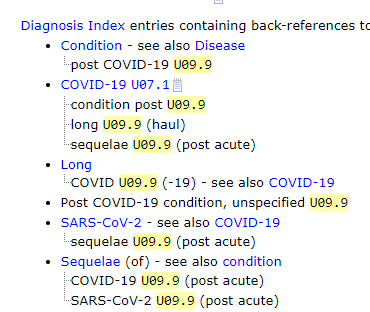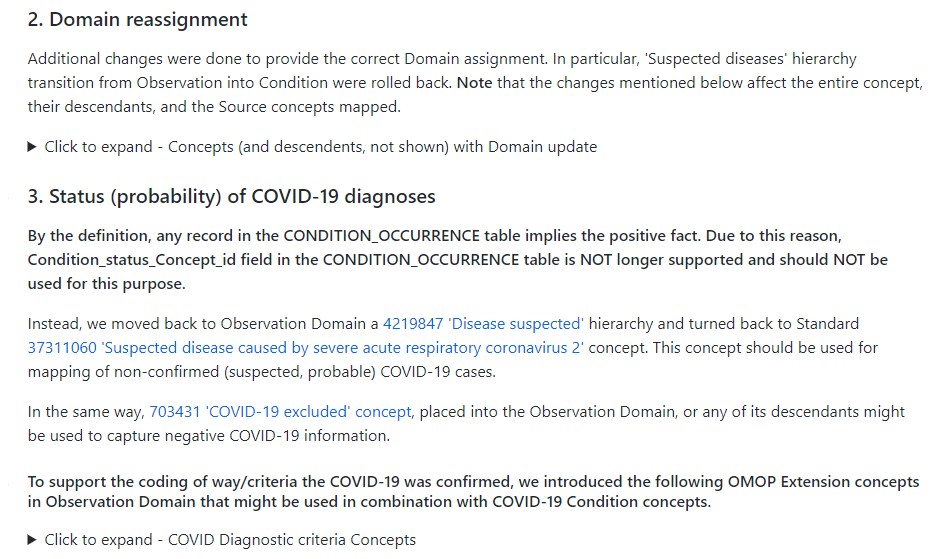You are right, @Alexdavv. We did create the “Disease suspected” concept. The problem is that we are operating in somewhat of a fog: When we say “suspected” - is that lack of certainty about whether or not there is a disease, or whether or not the well established symptoms are related to Covid? We can put out all sorts of well contrived definitions - but what if the community cannot utilize it?
Good point. The reason is that we have this cadence of SNOMED refreshes, where we have to keep the international, UK and US version in sync. That concept just missed the boat at the last refresh cycle.
The first one is the acute version of Covid-19, as a child of the existing generic COVID-19. It essentially makes that generic Covid a category, consisting of the acute and the various chronic ones. Not sure I like that drift of the meaning, and not unhappy we don’t have it yet.
The Post-acute one, which has the synonym “Long COVID-19”, is defined as “Symptoms attributed to SARS-CoV-2 infection that persist for more than four weeks following onset and with a negative infectious virus status.” The Chronic post-COVID-19 syndrome is not called “Long Covid”, and defined as “Symptoms related to COVID-19 that persist more than 12 weeks following onset.” Not sure this makes a lot of sense. The difference essentially is in the duration of persistence, and by taking the definition strictly the >4 week Post-acute Covid contains the >12 week Chronic post-Covid. It’s a mess. We are going to bring it up with SNOMED next week.
Here you go! Wonderful. This will actually answer some questions.
Bottom line: We should still just create our own generic concept defined as a disease that is after and due to an acute Covid-19 infection. And then we let science run its course.



